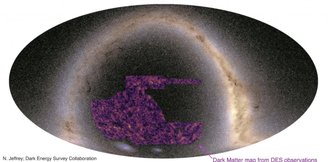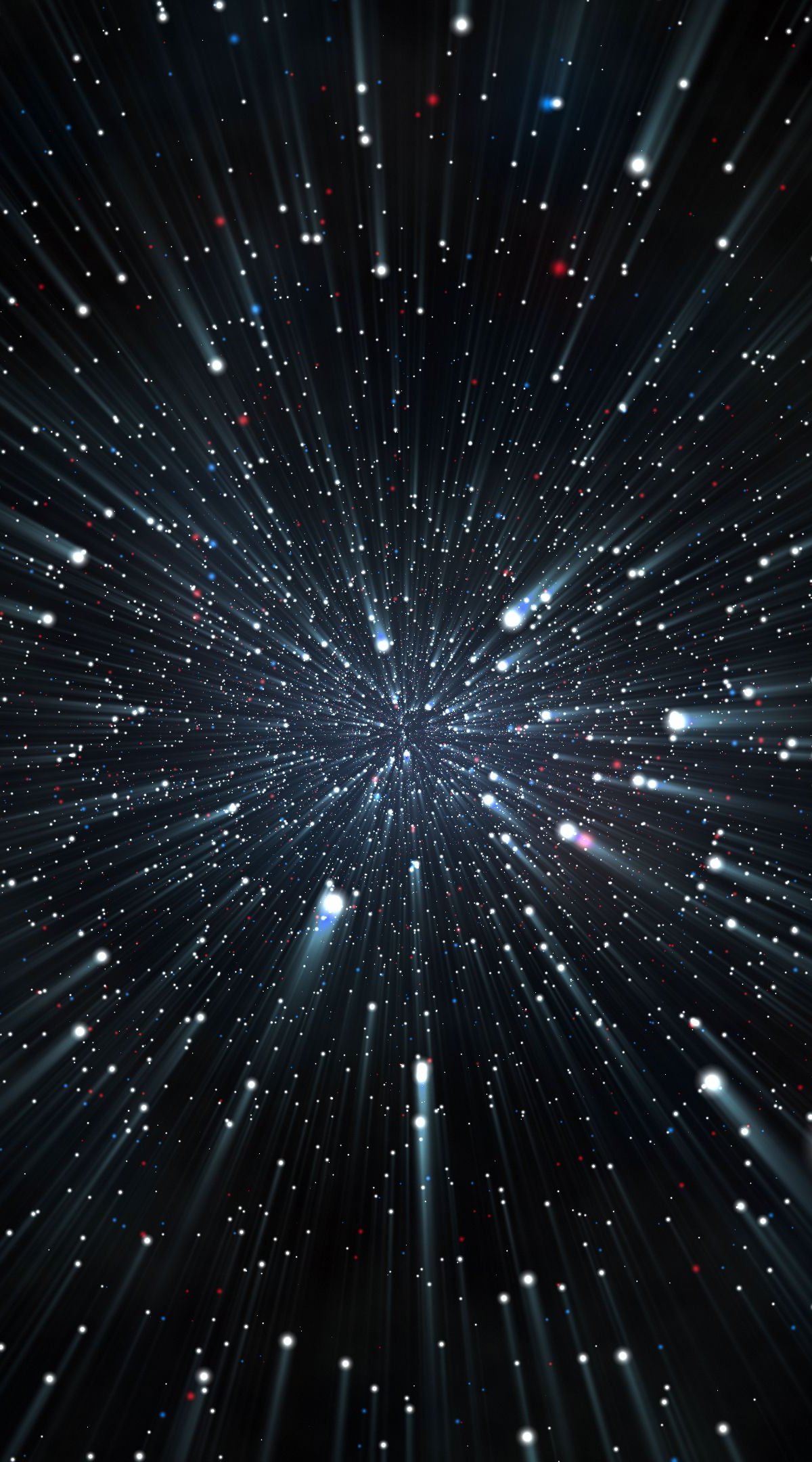Dark matter is one of the biggest mysteries in the universe; Scientists estimate that 5% of the universe consists of observable (baryonic) matter, 27% dark matter, and 68% dark energy. Despite its importance in astronomy, the nature of this hypothetical form of matter remains unknown and remains the subject of various studies. One possibility is that Majoron is associated with this phenomenon.
In a study published in the preprint journal arXiv, a group of researchers propose that the hypothetical particle known as the Majoron may be the key to explaining the existence of all matter in the universe. Moreover, the results suggest that this ‘ghost particle’ may also be related to the asymmetry of matter throughout the cosmos.
Before investigating what dark matter is, many studies are trying to understand why the universe is made of matter as we know it. For example, Current evidence shows that equal amounts of matter and antimatter were created after the Big Bang. However, while the majority of antimatter appears to mysteriously ‘disappear’, only matter is observed in quantity.
The observed shortage of antimatter in the universe is related to a phenomenon known as Baryonic asymmetry is characterized by the imbalance between matter and its opposite, antimatter.
Although the exact origin of this imbalance is not yet fully understood, science suggests that models of leptogenesis and baryogenesis offer possible explanations for the violation of cosmic symmetry.
“We show that the resulting Majoron is a suitable candidate for freezing in dark matter. We hypothesize that the two right-handed neutrinos have predominantly off-diagonal masses, suggesting that resonance leptogenesis may be the origin of the baryonic asymmetry of the Universe,” he explains in the introduction to the paper.
What is Majoron?
Majorons Majorana neutrinos are hypothetical particles proposed in theoretical physics that are associated with models describing their mass. The name is an homage to Italian physicist Ettore Majorana, known for his work on neutrinos.
Theoretically Majoron is a Goldstone boson that arises from the spontaneous breaking of spherical symmetry usually associated with the lepton number. Despite its importance in cosmological theories and particle physics, its existence continues. theoreticalBecause no scientific experiment has been able to detect this.
Lepton number is a property associated with leptons, fundamental particles such as electrons, muons, tau, and their neutrinos. The majoron is precisely associated with the spontaneous breaking of the spherical symmetry of the lepton number. So what is leptogenesis?
According to CERN, Leptogenesis is a theory that explains the mechanism that enables the asymmetry between matter and antimatter to emerge in the universe. This process may have occurred in the first moments after the Big Bang due to the unbalanced decay of heavy particles. As a result, fundamental symmetries were violated.
“Majoron may gain mass through the effects of quantum gravity and possibly represent the dark matter component observed in the Universe. “The Majoron-based dark matter scenario is consistent with existing observations of the anisotropy of the cosmic microwave background as long as Majoron survives as dark matter,” highlights another study on the subject published on arXiv.
Majoron and dark matter
The universe contains large amounts of dark matter as well as visible matter; Not to mention that most of it consists of dark energy. However, evidence shows that matter and antimatter were created in similar quantities in the early universe. It’s no surprise that one of the biggest mysteries is understanding why nearly all antimatter has disappeared.
For scientists in the latest study, The answer to the disappearance of antimatter may lie in neutrinos. These particles still have properties that defy full explanation. For example, known neutrinos have only leftward spin alignment due to their motion, unlike other particles that can spin in both directions.
Current evidence confirms the existence of three types of neutrinos associated with electron, muon and tau. Although their properties, such as mass and emissivity, have been widely studied, some scientists still consider the possibility of other types of neutrinos existing. If they do exist, they would be extremely difficult to detect directly due to much weaker interactions compared to known neutrinos.

The results of the research reveal the existence of two hypothetically right-spinning neutrinos with extremely high mass. According to scientists, these ‘right-handed neutrinos’ were initially in equilibrium with known neutrinos. However, with the expansion and cooling of the universe, this symmetry was broken, causing the right-handed neutrinos to disappear.
The study is not limited to the disappearance of these particles. Scientists explain that this reaction may also have caused the imbalance between matter and antimatter. So what is the relationship between this and Majoron? The theory proposes that right-handed neutrinos combine to create a hypothetical particle, the Majoron. It may have been created in abundance in the first moments of the universe.
The hypothesis is that in addition to these two reactions, Majoron may also be dark matter. Researchers believe this hypothetical particle could provide an explanation to these three great mysteries of the universe.
In any case, there is no scientific evidence to prove its existence, but scientists hope that neutrino detectors such as Super-Kamiokande (in Japan) and Borexino (in Italy) may contribute to its discovery.
It is important to emphasize that the study has been published on a preprint server and has not yet gone through the peer review process; This is necessary to verify the results.
The particles that make up everything around us are fundamental to understanding the universe, from atoms to the largest cosmic structures. Want to learn more about the subject? Discover what the fundamental particles of the universe are. Until next time!
Source: Tec Mundo
I’m Blaine Morgan, an experienced journalist and writer with over 8 years of experience in the tech industry. My expertise lies in writing about technology news and trends, covering everything from cutting-edge gadgets to emerging software developments. I’ve written for several leading publications including Gadget Onus where I am an author.











